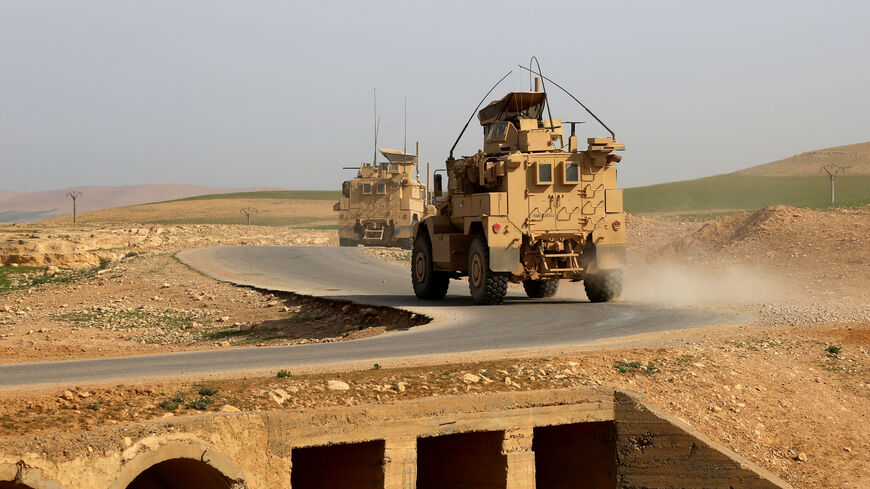
The US military said it struck Iranian-affiliated targets in eastern Syria in response to an earlier drone attack.
The US military sustained a rocket attack on a compound in Syria on Friday following the airstrikes that Washington launched on Thursday in the war-ravaged country. The US strikes came in response to an “Iranian origin” drone assault that killed one US contractor.
The US Central Command (CENTCOM) said in a statement that 10 rockets targeted coalition forces at the Green Village compound in northeast Syria at around 8:05 a.m. local time (2:05 a.m. ET). There were no injuries to US or coalition personnel. One rocket struck nearly 5 kilometers (3 miles) from the base and resulted in injuries to civilians, according to CENTCOM.
Below is a statement from US Central Command on a rocket attack targeting coalition forces that struck a civilian house, causing significant damage to the house and minor injuries to two women and two children. pic.twitter.com/XCgp6jZdWz
— U.S. Central Command (@CENTCOM) March 24, 2023The Associated Press also reported that one US service member was injured in another rocket attack at the Conoco energy plant in northeast Syria.
The rocket attacks came less than 12 hours after US President Joe Biden authorized airstrikes in Syria after a US contractor was killed in a drone attack in Syria.
The ordeal began when an unmanned aerial vehicle (UAV) struck a maintenance facility used by the US-led coalition near the northeastern city of Hasakah at around 1:38 p.m. local time (6:38 a.m. ET) on Thursday. Five US service members and another US contractor were wounded in addition to the killed US contractor, according to the Pentagon.
“The intelligence community assess the UAV to be of Iranian origin,” they said in a statement.
In response to the drone attack, CENTCOM forces conducted airstrikes in eastern Syria against what they said were “facilities used by groups affiliated with Iran’s Islamic Revolutionary Guard Corps (IRGC).”
US Secretary of Defense Lloyd Austin said the airstrikes were in response to Thursday’s drone attack as well as other recent attacks against coalition forces in Syria “by groups affiliated with the IRGC.”
The Syrian Observatory for Human Rights reported that the US airstrikes targeted Iran-backed militia positions in the following areas of eastern Syria, killing at least 11:
an ammunition warehouse in the city of Deir ez-Zor, killing six
the al-Bukamal desert, killing three
the southern outskirts of al-Mayadin, killing twoThe death toll could rise, according to the UK-based war monitor. A CENTCOM official confirmed to Al-Monitor that US airstrikes hit Iran-backed militia targets in Deir ez-Zor.
Iran’s state-run Press TV said no Iranians were killed in the US attack. Non-Iranians, such as Afghans, sometimes serve in Iran-backed militias in Syria. The outlet also reported that “resistance” groups will respond to the strikes.
The Syrian government did not immediately comment.
Biden addressed the incidents during a press conference in Canada on Friday.
“The United States does not, does not emphasize, seek conflict with Iran. But be prepared for us to act forcefully to protect our people,” he said.
Background: The US military is in northeast Syria as part of the international coalition to fight against the Islamic State (IS). They support Kurdish-led forces in the Syrian Democratic Forces (SDF) there. The US military also has a base in al-Tanf in southern Syria near the borders with Jordan and Iraq where they back the Syrian Free Army militia. Though the war against IS has wound down, the US presence in Syria is strategically important, in part to counter Iran.
Iranian and affiliated forces are in Syria to support the government of President Bashar al-Assad in his war against rebel groups. Iranian forces also sometimes attack the US military in Syria. In August, the US military hit Iranian targets in Syria after a drone attack on al-Tanf. There was also a drone attack on al-Tanf in January. The US military did not assign blame to the January attack but has blamed past incidents on Iran-backed forces.
Know more: Austin and Chairman of the Joint Chiefs of Staff Gen. Mark Milley testified before Congress earlier on Thursday. During the testimony, Milley said the US military has developed “multiple options” in the event Iran develops a nuclear weapon.
